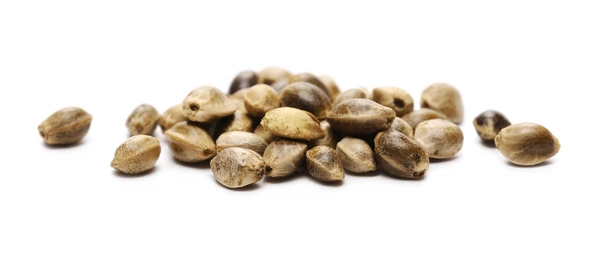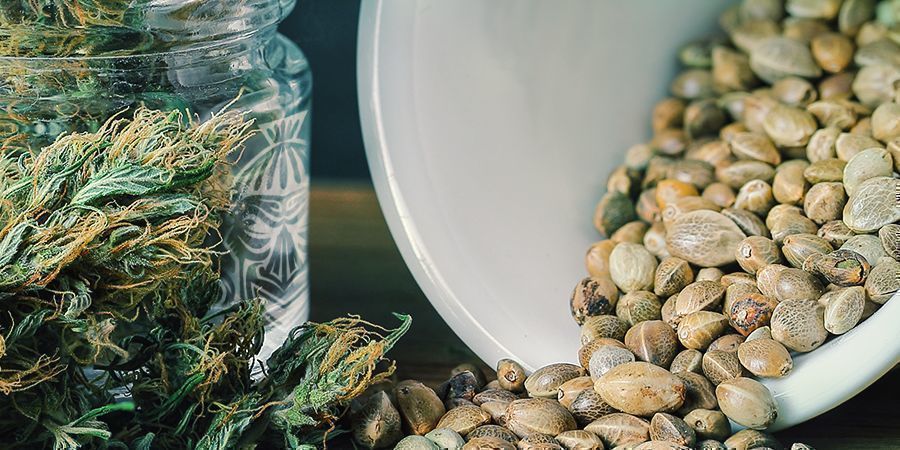Embarking on the journey of cultivating cannabis from seed to harvest is an exciting venture for many enthusiasts and cultivators. However, like any agricultural endeavor, it comes with its fair share of challenges. One crucial phase that demands careful attention is the germination and early growth stage. In this comprehensive guide, we will delve into the common issues faced during cannabis seed germination and growth, equipping you with knowledge to navigate through potential hurdles successfully.

ALSO READ – Understanding the Role of CBD Oil in Managing Epilepsy in Canada
Understanding the Germination Process
Before we dive into the challenges, let’s briefly understand the germination process. Cannabis seeds typically require three key environmental factors to sprout successfully: moisture, warmth, and darkness. When provided with the right conditions, the seed absorbs water, swells, and cracks open, revealing a tiny, fragile seedling.
Common Challenges and How to Overcome Them
Poor Seed Quality
- Challenge: Low-quality or old seeds may have lower germination rates.
- Solution: Invest in high-quality seeds from reputable breeders or seed banks. Check for factors such as color, size, and hardness to gauge seed viability.
Improper Germination Medium
- Challenge: Using the wrong germination medium can impede seedling development.
- Solution: Opt for a well-balanced medium like peat pellets, rock wool, or coco coir. Ensure it retains moisture without becoming waterlogged.

Incorrect Watering Practices
- Challenge: Overwatering or underwatering can hinder germination and lead to damping-off.
- Solution: Maintain a consistent level of moisture without saturating the medium. Use a spray bottle for gentle watering during the early stages.
Inconsistent Temperature
- Challenge: Fluctuations in temperature can slow down or halt the germination process.
- Solution: Keep the germination environment consistently warm, ideally between 70-85°F (21-29°C). Use heat mats if necessary, and monitor temperature levels closely.
Poor Light Conditions
- Challenge: Inadequate light during germination can result in elongated, weak seedlings.
- Solution: Provide low-intensity light for the first few days, gradually increasing intensity as seedlings emerge. Avoid exposing seedlings to intense light immediately.
Seed Depth and Planting Orientation
- Challenge: Planting seeds too deep or upside down can hinder proper germination.
- Solution: Plant seeds at a depth of 0.5 to 1 inch (1.3-2.5 cm) with the pointed end facing downward. Follow recommended guidelines for each specific strain.
Pests and Diseases
- Challenge: Fungal diseases or pests can attack vulnerable seedlings.
- Solution: Maintain a clean and sterile environment. Use preventive measures like neem oil or natural fungicides. Inspect seedlings regularly for signs of pests or diseases.
Nutrient Imbalances
- Challenge: Seedlings are sensitive to nutrient levels, and imbalances can lead to stunted growth.
- Solution: Use a light nutrient solution appropriate for seedlings. Gradually introduce nutrients as the plants develop, following a balanced feeding schedule.
Transplanting Stress
- Challenge: Rough handling or improper transplanting techniques can cause stress to seedlings.
- Solution: Transplant seedlings carefully, ensuring minimal root disturbance. Use appropriate containers and transplant at the right stage to prevent stunted growth.
Genetic Factors
- Challenge: Some strains may inherently have lower germination rates or be more susceptible to certain issues.
- Solution: Research and choose strains known for robust germination and growth characteristics. Share experiences with fellow cultivators to gather strain-specific tips.
Soil Quality and Composition
- Challenge: Inappropriate soil composition or poor quality can hinder nutrient absorption and overall seedling health.
- Solution: Invest in high-quality, well-draining soil with a balanced pH. Consider adding amendments like perlite or vermiculite to improve aeration and drainage.
Environmental Stressors
- Challenge: Exposure to extreme conditions such as high winds, sudden temperature fluctuations, or excessive humidity can stress seedlings.
- Solution: Create a controlled indoor environment or utilize protective measures outdoors. Gradually acclimate seedlings to outdoor conditions to minimize shock.
Light Schedule Disruptions
- Challenge: Inconsistent light schedules or interruptions can disrupt the crucial photoperiod for young cannabis plants.
- Solution: Establish a consistent light schedule during the early stages. For indoor cultivation, use timers to ensure a regular photoperiod.
Air Circulation Issues
- Challenge: Poor air circulation can lead to stagnant conditions, promoting the growth of mold or mildew.
- Solution: Use fans to ensure proper air circulation. Monitor humidity levels and address ventilation issues promptly to prevent mold-related problems.
Overcrowding and Competition
- Challenge: Planting too many seeds in a confined space can lead to overcrowding and competition for resources.
- Solution: Follow recommended spacing guidelines for each strain. Thin out weaker seedlings if necessary to allow for proper airflow and resource distribution.
Conclusion
Successfully navigating the challenges of cannabis seed germination and growth requires a combination of knowledge, careful observation, and proactive measures. By understanding the common issues and their solutions, cultivators can enhance the likelihood of a healthy and productive cannabis crop. Remember, each cannabis plant is unique, and attentive care during the early stages sets the foundation for a thriving garden.
Successfully navigating the challenges of cannabis seed germination and early growth involves a holistic approach that addresses various factors affecting seedling health. Cultivators should remain vigilant, regularly monitor their plants, and adapt their care routines based on the unique needs of the cannabis strains they are cultivating.
By understanding and proactively addressing common issues such as poor seed quality, environmental stressors, and nutrient imbalances, cultivators can increase the likelihood of a successful germination and growth phase. Each challenge presents an opportunity for learning and improvement, contributing to the overall knowledge and expertise of the cannabis cultivation community.
Remember, patience and attention to detail are key virtues in the journey from seed to harvest. As cultivators gain experience, they develop a deeper understanding of their plants, allowing them to fine-tune their cultivation practices and cultivate healthier, more robust cannabis crops. With the right knowledge and commitment, overcoming challenges in the early stages of cannabis growth can lead to a bountiful and rewarding harvest in the later stages of cultivation.
